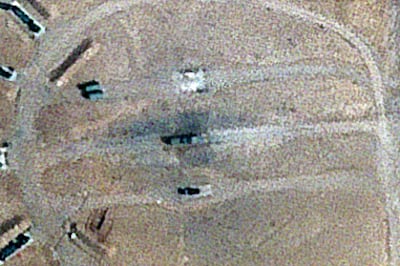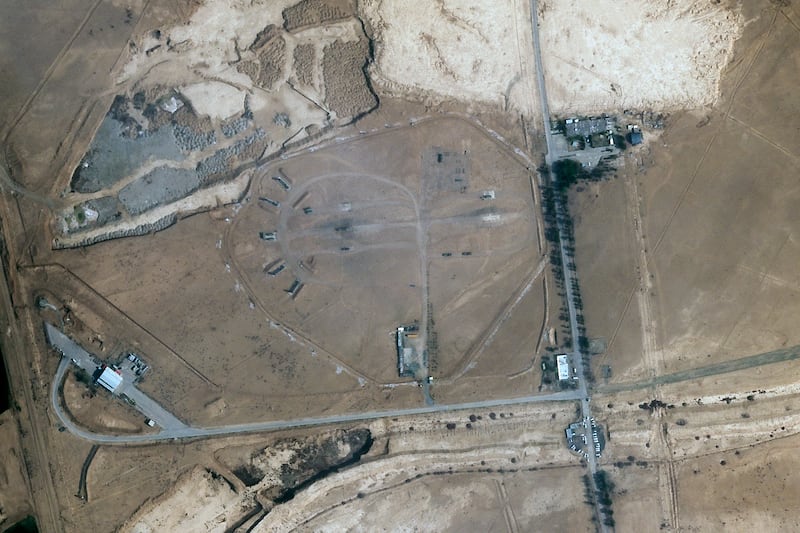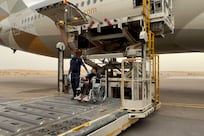Live updates: Follow the latest on Israel-Gaza
The latest satellite photos taken by private company Planet Labs appear to support claims that Israeli warplanes attacked an Iranian radar installation on Friday.
Christopher Biggers, an analyst with Hawkeye 360, a satellite imagery provider, found photographs over the weekend taken by Umbra Space, another private firm, showing Iranian air defences at Isfahan, site of a large air base and nuclear research centre.
The grainy satellite-based radar pictures from Umbra showed what appeared as damage to the mobile radar of the S-300, a long-range missile defence system.
Israel's attack came in response to an Iranian drone and missile attack on Israel on April 1, itself a retaliation for an Israeli strike on Iran's embassy complex in Damascus, which killed two generals.
This sparked debate among analysts as to whether the S-300’s 30N6E1 Tombstone mobile radar had been damaged or destroyed. High resolution images from Planet Labs taken on Monday show a large patch of burnt ground around the system.

Analysts were initially uncertain as to whether the site at the Eighth Shekari Air Base was struck by small drones launched within Iran – as Iran claims – Israeli jets, or both.
If jets hit the site, perhaps with long-range missiles from a safe “standoff” distance where they would be hard to detect on radar, the incident could represent the first clash between Israeli stealth F-35I Adirs and the much vaunted S-300 air defence system.
Iran’s purchase of the S-300PMU2 from Russia, completed in around 2016, caused consternation in Israel, as did deployment of the S-300 system to Syria in 2018, which Israeli Prime Minister Benjamin Netanyahu called “irresponsible”.
Iran’s variant of the S-300 is said to be able to track targets 200 kilometres away.
According to the Air Power Australia think tank, the 30N6E1 Tombstone is capable of engaging “targets with an RCS as low as 0.02 square metres at an unspecified range,” according to its manufacturer, meaning that it can intercept targets with a radar cross section of that size – or how targets appear on radar.
Stealth aircraft, including Israel’s F-35I Adir, have a classified radar cross section, but one that is widely described as being smaller than a golf ball. According to defence analyst Ray Alderman, this is 0.005m2 under the right conditions – particularly the angle of the aircraft in relation to the enemy radar. This means the stealth aircraft would be difficult to detect by the 30N6E1.
Such claims are only estimates however, since much about these systems remains classified, and analysts say there is a significant difference between detecting an enemy aircraft and being able to send a missile that can track it until scoring a hit.
US Air Force generals have in recent years said the F-35 would be the main aircraft leading efforts to break into enemy airspaces, despite claims of its vulnerability to detection by low frequency radars at long ranges, and more dangerously, detection by very high frequency radars at closer ranges, which might enable successful missile engagement.






